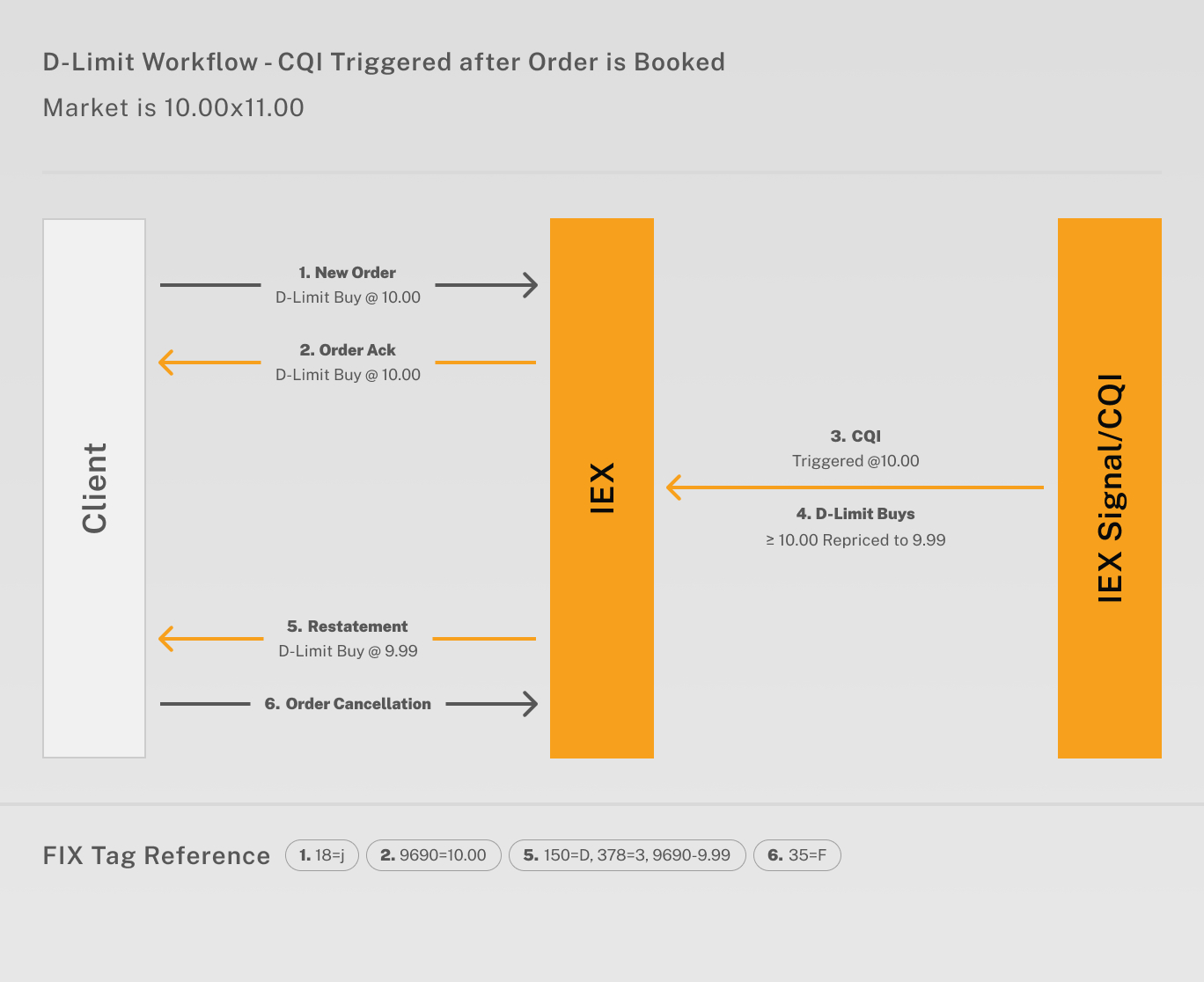Example Scenario

Quote is Stable. The Signal is "Off."
Primary Peg buy order booked at $10.09, 1 MPV below the NBB. The NBBO is $10.10 x $10.14, during a period of quote stability.
- Example 1: Sell ISO with a $10.09 limit crosses the spread and executes with the Primary Peg order at its resting price of $10.09.
- Example 2: Sell order with a $10.10 limit crosses the spread and the Primary Peg order exercises price discretion to execute on the NBB at $10.10.
- Example 3: Sell order with a $10.11 limit enters but doesn’t trade with the Primary Peg order, because Primary Peg orders cannot execute at prices more aggressive than the NBB for buy orders (or NBO for sell orders); no trade occurs.

Quote is Crumbling. The Signal is “On.”
Primary Peg buy order booked at $10.09, 1 MPV below the NBB. The NBBO is $10.10 x $10.14, during a period of quote instability (i.e., the quote is crumbling).
- Example 1: Sell ISO with a $10.09 limit crosses the spread and executes with the Primary Peg order at its resting price of $10.09.
- Example 2: Sell order with a $10.10 limit crosses the spread, but the Primary Peg order does not exercise price discretion while the Signal is on; no trade occurs.
- Example 3: Sell order with a $10.11 limit enters but doesn’t trade with the Primary Peg order, because Primary Peg orders cannot execute at prices more aggressive than the NBB for buy orders (or NBO for sell orders); no trade occurs.
Example Scenario

Quote is Stable. The Signal is "Off."
Primary Peg buy order booked at $10.09, 1 MPV below the NBB. The NBBO is $10.10 x $10.14, during a period of quote stability.
- Example 1: Sell ISO with a $10.09 limit crosses the spread and executes with the Primary Peg order at its resting price of $10.09.
- Example 2: Sell order with a $10.10 limit crosses the spread and the Primary Peg order exercises price discretion to execute on the NBB at $10.10.
- Example 3: Sell order with a $10.11 limit enters but doesn’t trade with the Primary Peg order, because Primary Peg orders cannot execute at prices more aggressive than the NBB for buy orders (or NBO for sell orders); no trade occurs.

Quote is Crumbling. The Signal is “On.”
Primary Peg buy order booked at $10.09, 1 MPV below the NBB. The NBBO is $10.10 x $10.14, during a period of quote instability (i.e., the quote is crumbling).
- Example 1: Sell ISO with a $10.09 limit crosses the spread and executes with the Primary Peg order at its resting price of $10.09.
- Example 2: Sell order with a $10.10 limit crosses the spread, but the Primary Peg order does not exercise price discretion while the Signal is on; no trade occurs.
- Example 3: Sell order with a $10.11 limit enters but doesn’t trade with the Primary Peg order, because Primary Peg orders cannot execute at prices more aggressive than the NBB for buy orders (or NBO for sell orders); no trade occurs.
Related Content
Contact Us
Questions about trading on IEX Exchange?
Reach out here or talk to your IEX contact.





